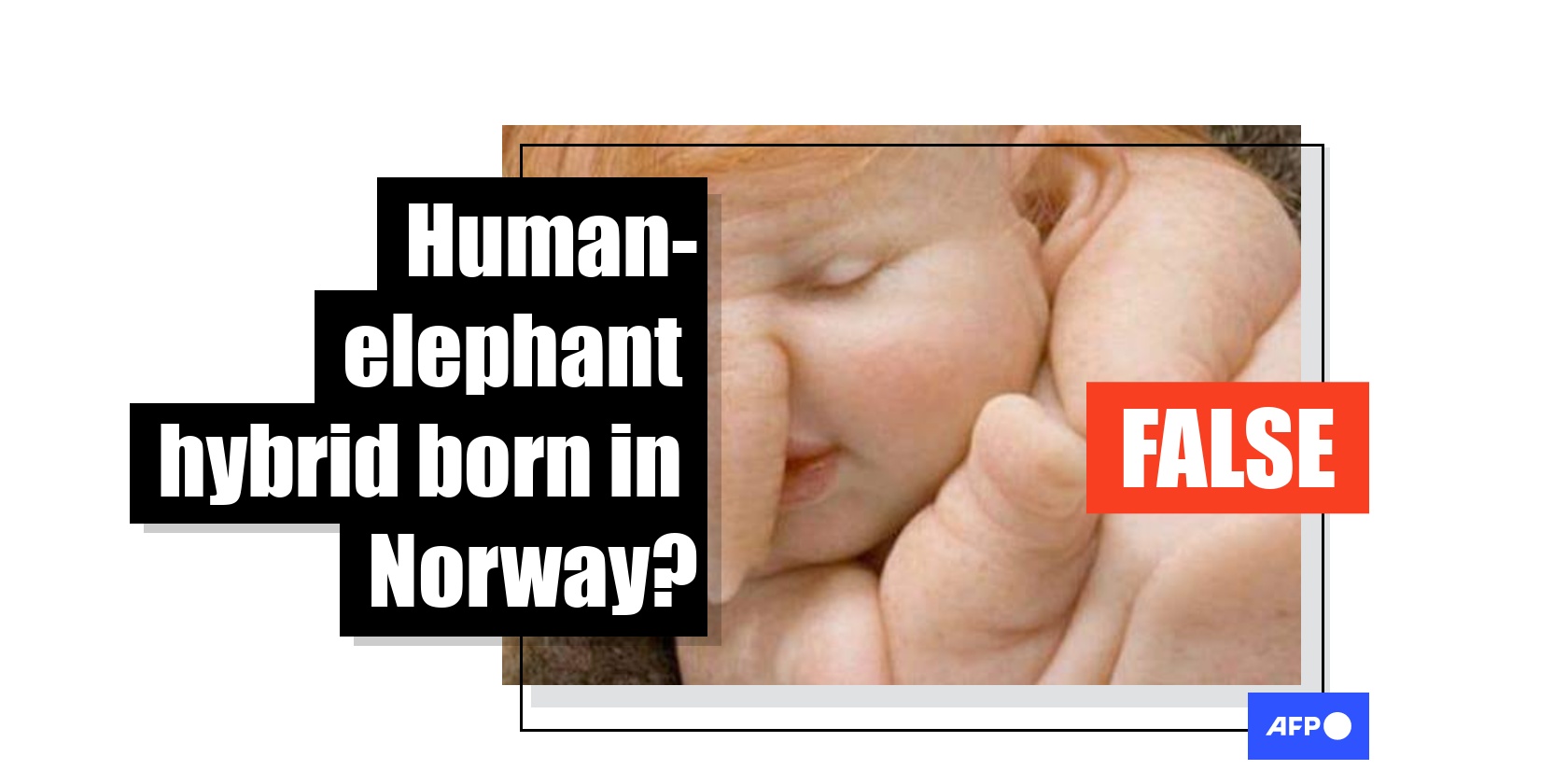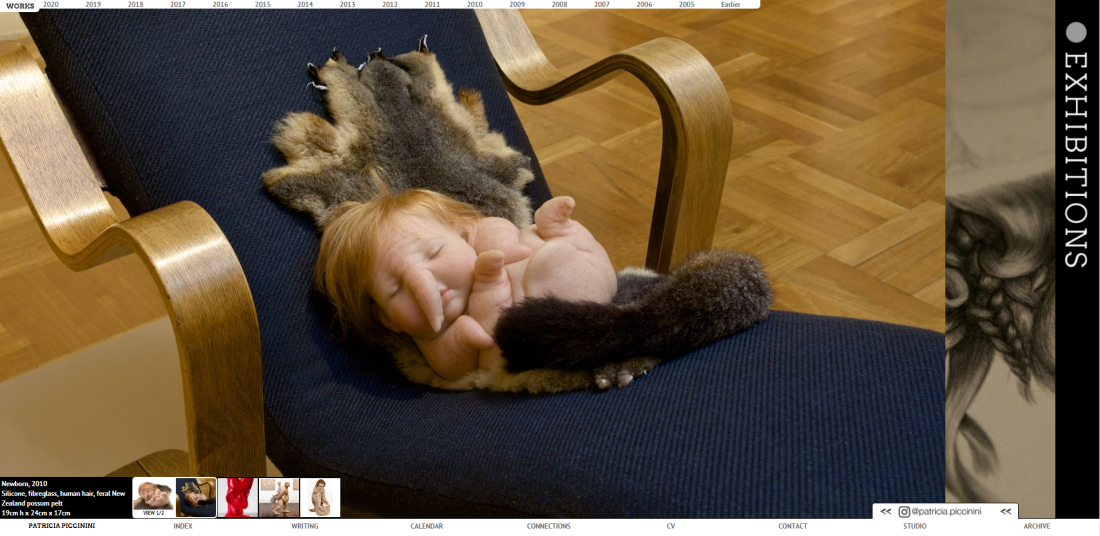
This is a picture of an artwork, not a real human-elephant hybrid
- This article is more than four years old.
- Published on June 15, 2021 at 17:29
- 2 min read
- By Tendai DUBE, AFP South Africa
A Facebook post published on June 12, 2021, and shared in South Africa includes a picture of an infant with an elongated nose similar to an elephant’s trunk. The “newborn” has no fingers or toes, but sports a head of ginger hair.
“Human-Animal hybrid experiments are taking place away from the media spot light. This Human-Elephant hybrid was recently born to a woman in Norway (sic),” reads the post’s caption.

In response to the image, many people made comments raising moral and ethical questions about the field of genetics, while others drew parallels with the timing of the new Netflix drama Sweet Tooth -- which explores the adventures of a boy, who is part human and part deer, in a post-apocalyptic world.
However, a Google search revealed older debunks about this image (see here and here) rejecting claims that millions of Hindus were travelling to Norway to witness what they believed was the reincarnation of the elephant-headed deity Ganesha.
These debunks traced the original claim to a website called Huzlers, which carries the following disclaimer on its page: “Huzlers is a satirical and fictional entertainment blog producing content in such a complex way that it could not conveniently be presented or represented anywhere else but Huzlers!”
Hybrid-animal artwork
A reverse image search of the picture leads to the website of an Australian artist called Patricia Piccinini, who created the piece titled “Newborn, 2010”.

Piccinini’s artwork was made from “silicone, fibreglass, human hair and feral New Zealand possum pelt” and was exhibited in November 2010 at the Roslyn Oxley9 Gallery in Sydney, Australia.

Meanwhile, scientists reported earlier this year that they had successfully grown monkey embryos containing human cells for the first time.
The stated aim of the research is to find human-animal hybrids that could provide better ways of testing drugs and growing human organs for transplants but the science is not without controversy.
Copyright © AFP 2017-2025. Any commercial use of this content requires a subscription. Click here to find out more.
Is there content that you would like AFP to fact-check? Get in touch.
Contact us
